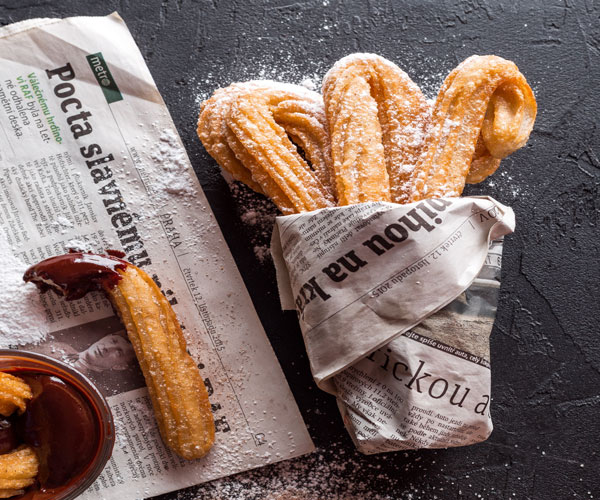Everyone by now has probably heard of or eaten a churro. They’re a delicious fried snack coated in either sugar or cinnamon and dipped in your choice of chocolate, caramel, or other sweet sauce. It’s eaten in many countries such as Spain, Latin America, North America, and even the Philippines.
Since there are few ingredients, they’re easy to make and they have a short cook time. This sweet pastry has become very popular worldwide with varying iterations. Though this food is popular, few know where indeed it’s originated.
So, now lets learn the real history of churros.
Where do churros come from?
While the true history of churros is a bit unclear since many historians claim that the Spanish churro descended from the Chinese pastry called youtiao, though the Chinese pastry is fried in oil the same way as a churro, it looks too long. It is not coated in any type of sugar and paired with chocolate like seen in Spain.
It’s been said that the Portuguese travelers brought youtiao back to Iberia, where they made it into the star shape, and it gained popularity in Spain. Others have noted that churros originated in Spain by Spanish shepherds. The history of churros is still unclear, but they gained popularity when chocolate was circulating. Researchers have theorized that churros were first introduced to South America during the Spanish Inquisition in the 1500s. When the Spanish introduced cacao to Europe, it became the perfect sauce to pair the churros.
What are churros made of?

One of the main selling points for churros is that they’re easy to make with few ingredients. When you make them homemade, they can taste delicious since you use fresh ingredients and oil. Churro recipes typically require milk, eggs, butter, flour, salt, sugar, and cinnamon. You combine the milk, eggs, butter, flour, and salt to make a dough then you fry them in hot oil. After you coat them in cinnamon or sugar, depending on your taste.
You will be surprised at how delicious churros can be just by using these simple ingredients. I know frying can seem scary, but it will be worth it when you taste your homemade churros. Compared to the churros you buy at the mall, they were previously fried, frozen, then reheated, and sitting for hours. Homemade can’t be beaten and will blow those churros out of the water.
Churro variations

Since churros have become popular worldwide, many countries have made their variations. Commonly in Mexico, their churros are coated in cinnamon and sugar being filled or served with dulce de leche or cajeta, a caramel sauce. Spain has their churro dough similar to Mexico, but the difference is theirs are coated in only sugar. Madrid and the Andalusia region have a variation called Porras, which are thicker than typical churros. In Granada, they have a more buttery and eggy variation, called tejeringo. In Latin America, it’s not very traditional for people to eat churros only as a sweet snack. They can also be eaten as a savory breakfast, paired with thick hot chocolate, or served with café con Leche.


